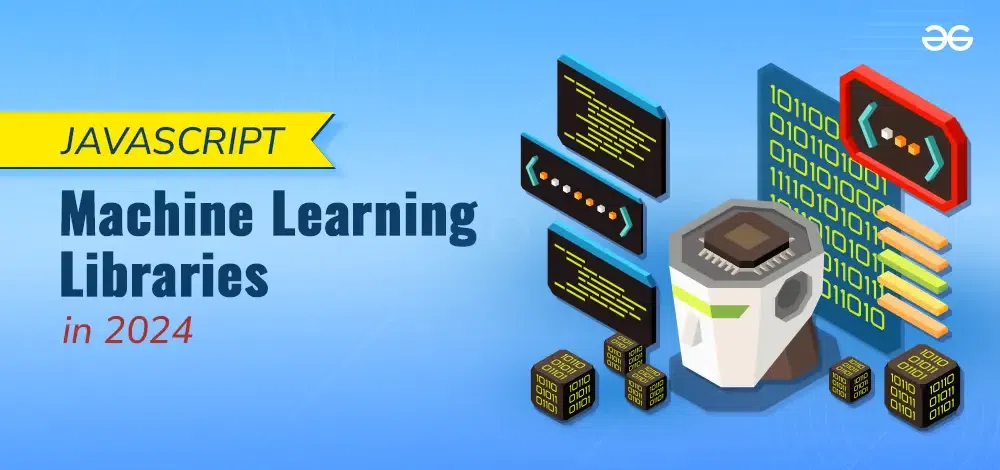
|
|
Machine learning (ML) integration in web applications stops being an edge and starts becoming mainstream as we move further into 2024. JavaScript leads this revolution with its large ecosystem, thereby democratizing machine learning for web developers and businesses at large. In this article, we are going to list some of the most advanced JavaScript machine libraries that transform the market today. These libraries enable both experienced programmers and novices to apply complex models directly in their web projects. The Rise of Machine Learning in JavaScriptMachine learning has been native to Python space all along but widespread use of JavaScript on web platforms has changed everything as it seems. Now it is possible to run machine learning models directly in browsers without compromising on performance due to advances in browser technologies and JavaScript engines. This shift not only improves user experience by reducing server-side dependency but also ensures data privacy because information does not need to be sent beyond user’s device.  Best Javascript Machine Learning Libraries in 2024 Top JavaScript Machine Learning Libraries in 20241. TensorFlow.jsAn open source library created by Google TensorFlow.js extends the capabilities of its famous Python equivalent to JavaScript, enabling developers to create and train models directly in the browser or on Node.js. It supports advanced machine learning techniques such as deep learning and allows importing of existing TensorFlow models for seamless integration. Key Features:
2. Brain.jsThe whole approach behind Brain.js is based on a proper understanding of neural networks making it suitable even for JavaScript developers who do not have enough knowledge about machine learning. This makes it particularly user-friendly placing much importance on speed and ease-of-use rather than exhaustive configurability. Key Features:
3. Synaptic.jsSynaptic.js is a versatile and detailed library for building arbitrary neural network architectures. Its lower-level approach provides developers with the tools to experiment with and understand the underlying mechanics of neural networks. Key Features:
4. ML5.jsPositioned as a friendly and approachable option, ML5.js makes machine learning approachable for artists, designers, educators, and beginners. It is built on top of TensorFlow.js and simplifies interaction with pre-trained models through a high-level API. Key Features:
5. ConvNetJSConvNetJS allows developers to construct deep learning models directly in JavaScript without requiring external dependencies. It’s particularly good for those looking to experiment with deep learning without the overhead of more complex frameworks. Key Features:
6. Keras.jsKeras.js specifically runs Keras models in the browser with regard to neural networks. Developers can import models from the Keras framework (Python) directly and use them for inference in web applications afterwards. Key Features:
7. Face-api.jsSpecializing in facial recognition technology, Face-api.js simplifies the implementation of facial detection, recognition, and expression analysis directly in the web browser. Key Features:
8. NaturalFocused on natural language processing (NLP), Natural offers tools for tokenizing, stemming, classification, phonetics, and more, making it a comprehensive toolkit for handling text-based data. Key Features:
9. CompromiseCompromise is a compact, fast, and robust library for natural language processing in JavaScript. It prioritizes performance and ease of use, making it suitable for projects that need to process and analyze large volumes of text quickly. Key Features:
10. Neuro.jsNeuro.js is a framework that helps build AI-powered network architectures capable of learning through interactive experiences. It supports reinforcement learning as well as supervised learning, giving it adaptability when developing responsive systems. Key Features:
11. Danfo.jsDanfo.js is inspired by the popular Python library Pandas and offers extensive data manipulation capabilities, making it ideal for handling and processing structured data. It’s tailored for data scientists and developers looking to perform advanced data analysis and visualization directly in JavaScript. Key Features:
12. WebDNNWebDNN optimizes the execution of deep neural networks on the web. It automatically converts trained models into a web-friendly format, accelerating computation by utilizing the user’s device capabilities such as GPU and CPU. Key Features:
13. NLP.jsNLP.js provides an integrated approach to processing and understanding human language, designed specifically for building chatbots and other conversational interfaces. It supports multiple languages and comes with built-in features for natural language understanding. Key Features:
14. ReinforceJSReinforceJS is tailored for reinforcement learning tasks. It provides a flexible environment for training agents in various scenarios, from simple games to complex simulations, directly in the browser. Key Features:
15. Pavlov.jsPavlov.js is named after the famous psychologist and focuses on implementing reinforcement learning techniques based on the concept of “conditioned responses”. It’s designed to help developers easily incorporate decision-making algorithms that improve over time based on user interactions. Key Features:
Integrating ML Libraries into Your ProjectsTo begin incorporating any of these libraries into your projects you have to know the basics of machine learning, set up your development environment and experiment with a variety of models till you find what works best for you in your application. Here are a few steps to help you get started:
Choosing the Right LibraryThe choice of a JavaScript machine learning library should align with your project’s needs, complexity, and the specific machine learning tasks you intend to perform. Libraries like TensorFlow.js and ML5.js are ideal for deep learning and broad applications, while specialized libraries like Face-api.js and Natural are better suited for specific tasks such as facial recognition and text processing. Overview of Best JavaScript Machine Learning Libraries
ConclusionJavaScript has emerged as a very dynamic field of machine learning, driven by the overall trends in web development and artificial intelligence. Of these libraries, each provides numerous choices for developers who want to include machine learning in their web applications, and possesses unique strengths and capabilities. Through choosing the right tools and continually studying from vast resources present, developers can improve their applications’ functionality as well as create user experiences that are more interesting and intelligent. In terms of deep learning, natural language processing or neural networks, JavaScript ecosystem 2024 offers every tool required to bring your projects with high technology to life. |
Reffered: https://www.geeksforgeeks.org
| JavaScript |
Type: | Geek |
Category: | Coding |
Sub Category: | Tutorial |
Uploaded by: | Admin |
Views: | 18 |